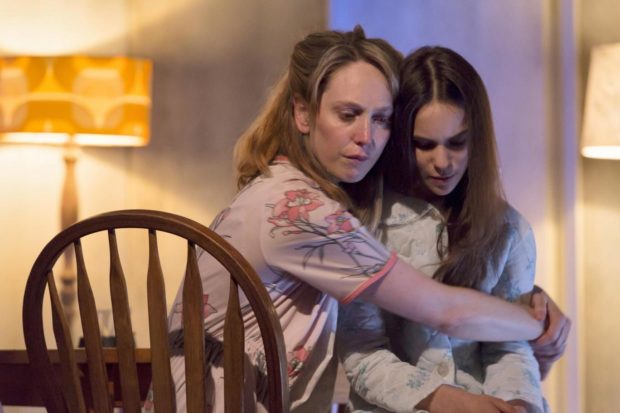You have no items in your cart. Want to get some nice things?
Go shopping
Alice Birch is on a roll. Her feminist play Revolt. She Said. Revolt Again was the co-winner of the 2014 George Devine Award. In 2016 Birch was selected as one of the Creative England 50. Her screenwriting debut, Lady Macbeth, adapted from the Russian novella by Nikolai Leskov, has won numerous awards. So, it was with great anticipation that I went to Anatomy of a Suicide at the Royal Court on the night of the general election. As it turned out, the title of her play became increasingly apropos as the constituency results rolled in later on that evening.
As the name suggests, Anatomy of a Suicide does not offer light relief. Looking at three generations of women, Birch explores how Carol’s depression and suicide affects her descendants. The director, Katie Mitchell, delivers a powerful representation of trauma’s devastating effects, but the play’s form makes it difficult to fully engage with it.
Three stories are played alongside one another, their scenes overlapping on stage: Carol; her daughter, Anna; and her granddaughter, Bonnie. This device conveys how Carol’s life affected Anna’s, their two lives shaping Bonnie’s in turn. Carol’s despair – we learn – is as present in the lives of her daughter and granddaughter as it was in her own. This playing with form, displaying the past in the present, is reminiscent of Art Spiegelman’s representation of the trauma of the Holocaust affecting successive generations of a Jewish family in his graphic novel, Maus. It is a brilliant idea and Mitchell almost pulls it off; the problem is that human beings are not designed to multi-task. Having three scenes go on at the same time is distracting; it was nearly impossible to focus on just one. This deflects from some very good dialogue and at times makes the play somewhat tiresome to watch, particularly when coupled with the fact that the play needed some pruning.
Nevertheless, Mitchell’s production is impressive, with a sharp attention to detail. For example, even the scene changes are used with effect. Carol, Anna and Bonnie’s unhappiness is – at least partly – the result of controlling partners, unwilling to give these women the independence they need. The scene changes underscore these women’s lack of agency, with their being undressed and dressed by their partners. This exposure makes uncomfortable watching. Without giving too much away, there are a number of moments that are very difficult to watch, the horror of these women’s lives spilling over into the audience, passing the trauma onto it in turn.
Anatomy of a Suicide is not entirely heavy, however; there are some very, very funny moments – and not one of these is lost. Credit must also go to the brilliant performances of all the actors. Kate O’Flynn, who plays Anna, in particular, was outstanding, playing a range of emotions and states (including a very funny scene when Anna is high on drugs) utterly convincingly. In the end, Anatomy of a Suicide is an interesting play and Mitchell’s production is excellent. Birch’s ball is continuing to roll.
Anatomy of a Suicide continues at the Royal Court Theatre until July 8. Tickets are available from £12.

About Emily Bueno
Emily Bueno has an M.Phil in literature from Trinity College, Dublin. She has written for the Telegraph Culture section and the TLS. She is a trainee solicitor and lives in London.




